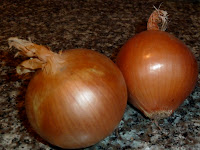From Mangia e Taci, The D'Orazi Family Cookbook. Forward by Peggy.
While visiting my parents during the preparation of this book, I asked my Mother how to make the polpette she used to make when we were children. I remember how I loved them as they were unlike any meatball I’d ever had—most of which seem like mini round burgers in a sauce. It was a mystery to me how she achieved that tender savory interior and the slightly crusty exterior, and they were never served in a sauce. She told me that they were made from leftover meat, especially Bollito, but that any leftover meat and cooked vegetables could be used. I’d been visiting for a few days, so we had some leftover steak, a chicken breast in mushroom sauce, and a baked potato, so she agreed to prepare some polpette so that I could document the procedure. She used to use a meat grinder to prepare these, but now swears by the food processor. Trust me, it’s a unique and delicious way to create a totally new meal out of leftovers that might otherwise never get eaten. You need to use your judgment a bit regarding the ingredients you use—if it seems as though they would work together in the same meal, they will probably make good polpette.
½ lb leftover cooked beef (steak, roast, boiled, etc., or you can use some fresh ground if needed)
½ small onion
2 large cloves garlic
½ cup Italian parsley leaves
1 teaspoon fresh chopped oregano or ¼ teaspoon dried
½ lb other cooked leftover meat (chicken, turkey, pork, lamb, ham, etc.); it’s fine even if there is sauce or vegetables with the meat
1 medium cooked potato or equivalent amount of leftover rice
2 slices bread soaked in ¼ to ½ cup milk or broth
2 ounces cheese, grated (preferably parmesan, but cheddar, Swiss, or most any hard cheese will do)
Salt and pepper
1 egg, beaten
Flour as needed
Oil for frying (canola, peanut, etc)
 Put the beef in the food processor with the onion, garlic, and herbs and process until finely chopped—do not over process. Remove to a large bowl. Place the other ½ lb meat in the processor with the potato and soaked bread and process until finely chopped. Add to the beef mixture and stir in the cheese. Season with salt and pepper to taste, and stir in the egg. The mixture should not be too wet at this point and should hold together easily. You can add dry bread crumbs if it seems too wet, or a little milk or broth if it seems too dry. Make golf sized balls and flatten slightly. Heat about ½ inch oil in a heavy bottom skillet over medium heat. Dredge the polpette in flour and fry in batches until brown on all sides, adding oil as needed, and adjusting heat as needed. Drain on paper towels. Makes 15 to 20.
Put the beef in the food processor with the onion, garlic, and herbs and process until finely chopped—do not over process. Remove to a large bowl. Place the other ½ lb meat in the processor with the potato and soaked bread and process until finely chopped. Add to the beef mixture and stir in the cheese. Season with salt and pepper to taste, and stir in the egg. The mixture should not be too wet at this point and should hold together easily. You can add dry bread crumbs if it seems too wet, or a little milk or broth if it seems too dry. Make golf sized balls and flatten slightly. Heat about ½ inch oil in a heavy bottom skillet over medium heat. Dredge the polpette in flour and fry in batches until brown on all sides, adding oil as needed, and adjusting heat as needed. Drain on paper towels. Makes 15 to 20.Mary’s comment: I’ve made polpette many times and each time a different way—it depends on what leftovers you have. I’ve used leftover pork loin and lunch meats (vs. beef), and leftover rice instead of potatoes. If the leftover meat has garlic in it, I use that garlic and don’t add any more. If the leftovers already have herbs, I don’t add any oregano or parsley. I’ve done it without adding the milk soaked bread and used bread crumbs. Funny thing is, no matter what goes into them, they always seem to taste the same—delizioso! One more thing…don’t forget the ketchup for dipping! Or serve them with the stuffed baked tomatoes in this book and you can forget about the ketchup.










